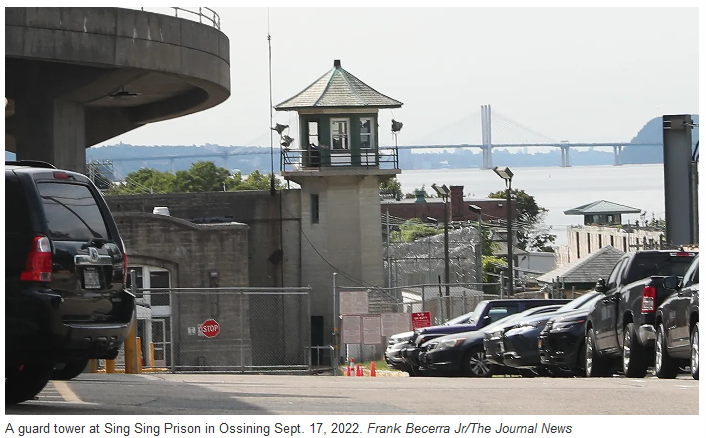OPINION reprint from Times-Herald Record (hyperlinks added; supporting data here)
William Martin
Special to the USA TODAY Network
Published 12:18 p.m. ET March 29, 2023
Continuing declines in crime rates and incarcerated populations pose the question: what to do with our increasingly empty jail cells? The trends are unmistakable for the smaller cities and towns of the state. Index (serious) crime rates for counties outside NY City have fallen by 39% since 2012. County jail populations have correspondingly fallen by 42% in the last ten years. As county budgets come under increasing pressure, questions about fiscal overreach are emerging.
Thus the questions posed by the Ulster County Comptroller to his elected officials: why is the county jail so large, so heavily staffed, and over-funded given the drop in incarcerated populations? Aren’t there better uses for the county money? His recommendation: “a reduction in facility capacity and commensurate staffing” and an “examination of the costs of operation to ensure that they are commensurate with the needs of the community”.
The process has begun in some counties. Duchess county has closed empty pods that housed 200 persons and downsized its new jail from 569 to 328 beds. The Albany Sheriff has repurposed empty cells into housing for the homeless including homeless community college students.

Broome County, regularly ranked as the top county in the state for jail incarceration, faces similar trends—and equally daunting fiscal dilemmas given looming state budget cuts. In the last ten years index crime rates for Broome County have fallen steadily, dropping by 35 percent–even as the number of guns and gun violence has risen.
And jail capacity and populations? In 2015 the county was convinced by jail authorities and an external study they commissioned to spend $6.8 million to expand jail capacity from 536 to 600 persons. The expected boom in jail numbers, projected to hit 700, never came. Average daily jail population has fallen instead from 500 to below 300, half the capacity of the jail. In January, 296 persons were housed in the jail, including 26 held on behalf of federal authorities (and of the 296 only 50 were convicted and sentenced for a crime).
The result? As in Ulster, a dramatic increase in the cost to keep a person in the county jail, rising from $45,000 in 2012 to $109,000 now.
For the cost of jailing one person on misdemeanor charges, the county could offer free tuition to SUNY-Broome to twenty local youth. Or hire two mental health counselors. Or offer incentives to respond to the staffing crisis at the county’s debilitated Department of Social Services, with over 80 vacant positions. Local elected officials appear oblivious to these needs, expanding instead the jail budget yet again this year, and empowering the newly elected Sheriff to hire up to 38 more correctional officers by offering $5,000 bonuses and lowering educational requirements.
As in Ulster the story is straightforward: its time to ask local legislators and auditors to investigate and adjust staffing at the county jail—and release funds to where they might further reduce crime, as in supporting underfunded mental health, housing, and youth services.
William Martin is a Johnson City resident and professor emeritus at Binghamton University.
These are all important questions to ask and continue asking. This should only be the start. I drove past the county jail for years as I transported lumber from the local lumberyard. It’s just not right.